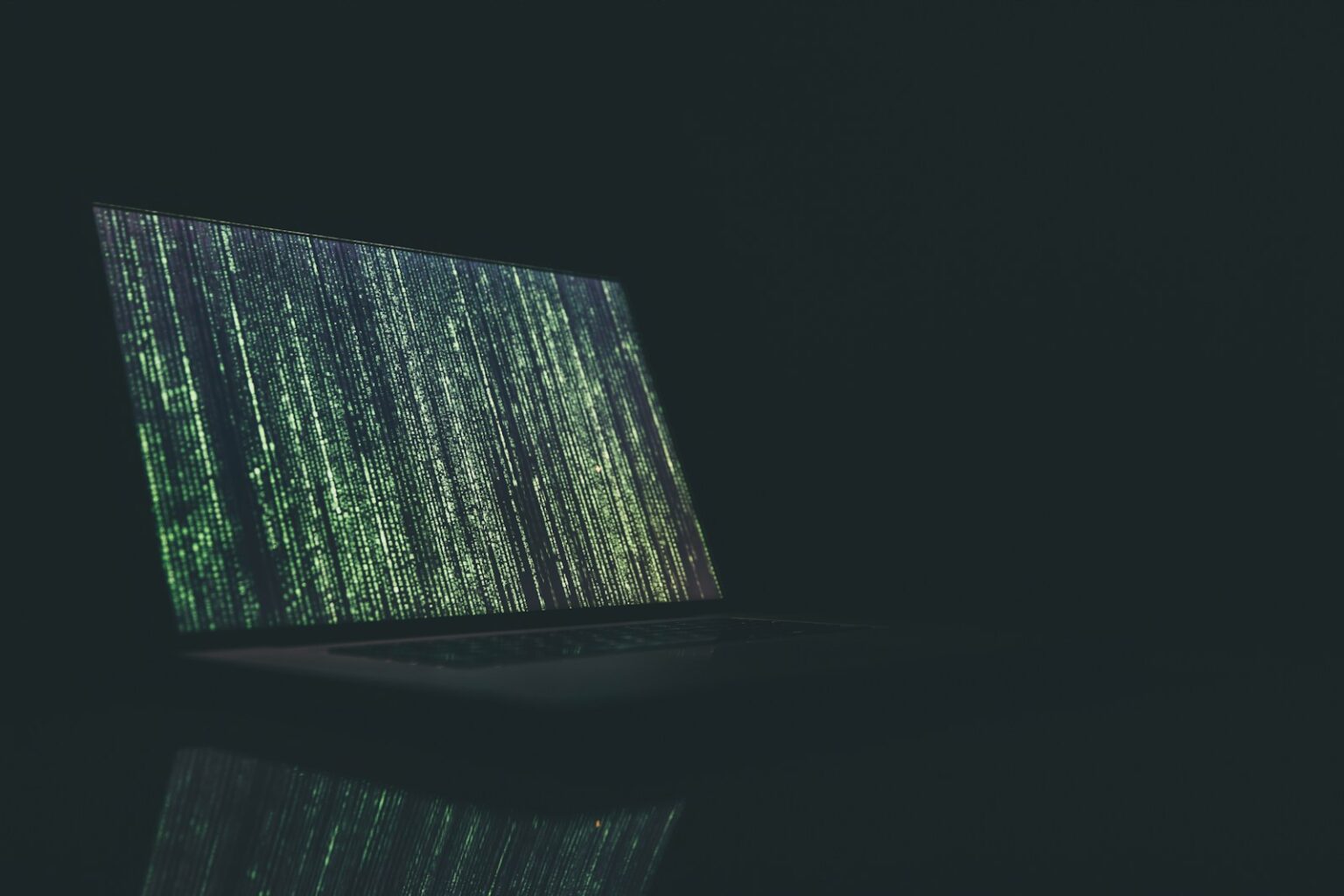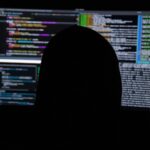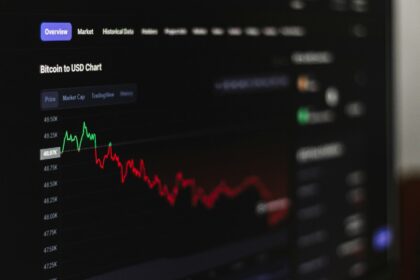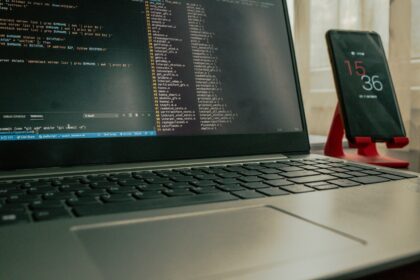Welcome to the fast-moving world of cybersecurity, a domain where each breakthrough in software or hardware seems to spark a new way for attackers to exploit weaknesses. The scene is far from stable; every system patch, cloud deployment, or Internet-of-Things rollout can unintentionally introduce fresh entry points, and would-be intruders refine their techniques with impressive speed. For the vast number of people and organizations that depend on digital networks-which includes almost everyone today-the constant cycle of discovery and breach compels a regular rethink of protective measures. To bring order to this ongoing barrage, many experts draw on a mental model they sometimes call the Matrix of All Current Cybersecurity Issues. Rather than a tidy spreadsheet, the model looks more like an unruly map of intersecting lines that spans individual users, corporate data centers, and even military command chains. Knowing how these threads overlap is not just academic; it guides concrete actions for shielding passwords, maintaining trade confidentiality, and keeping essential public systems operational.
At its essence, cybersecurity seeks to protect information, devices, and communications from being stolen, changed, or revealed without permission. Picture a medieval castle surrounded by thick walls, sturdy gates, and watchful sentinels guarding its gold and scrolls. Today,s computer networks play that same protective role, though attackers seldom arrive with a battering ram. More often they slip a poisoned phishing email into an inbox, plant hidden malware, or exploit a careless cloud setting-always aiming for the tiny openings people and policy accidentally leave ajar. In the pages that follow we will pull apart this tangled defense, looking at technical flaws, shifting rules, profit motives, and, most important, the human element that can either fortify or undermine the whole effort.
The Human Element: The Weakest Link?
Modern attackers recognize that bending a person’s judgment often proves faster and cheaper than breaking a complex encryption algorithm. Carefully disguised phishing emails impersonate trusted colleagues, pretext phone calls create a convincing sense of urgency, and even well-intentioned software updates can slip in hidden malware. Because most organizations spend heavily on firewalls, intrusion detection systems, and similar defensive hardware yet devote far fewer hours-and budget-line-items-to sustained employee training, cyber criminals naturally gravitate toward this softer underbelly. Understanding why intelligent workers still fall for these ploys-and how to replace complacency with a culture of informed skepticism-becomes indispensable to any serious assessment of current cyber risk. The human element, thus, stops being an awkward add-on and takes up center stage in the security matrix, bluntly reminding management that clever technology can protect only a network whose users think and act securely..
Social Engineering: Manipulating Humans, Not Machines
Social engineering is especially troubling today because it bypasses code altogether and drills straight into everyday human behavior. Rather than laboring to crack a password hash, a well-trained attacker will sculpt an ordinary-looking conversation or message, gently nudging an employee to disclose a client list, reset a password, or approve an out-of-band wire transfer. Trust, curiosity, fear, and the artificial pressure of a ticking clock form the manipulators favorite toolkit-apologies, job threats, alarming news, or even a promising promotion can pull open the door that pure cryptographic strength left locked.cked.
Phishing: The Familiar Email Bait
Phishing still serves as the primary gateway for most data breaches. Cybercriminals inundate employee inboxes with polished emails that seem to originate from trusted banks, cloud providers, or even from teammates whose accounts have been compromised. Each message pushes for urgent action: click a shiny link, open a seemingly useful attachment, or verify login information on a fraudulent web page. Before responding to any unexpected email, pause for an extra moment. Check the sender s address for minor misspellings, read the body for odd wording, and if uncertainty persists reach out to the person using a contact method you already trust.
An Anecdote on Phishing
I once read about a small firm that was blindsided by a well-worn scam. One employee opened what looked like a typical email from the CEO and quickly scanned the subject line. The message demanded an urgent wire transfer, claiming a once-in-a-lifetime deal. Buried under other deadlines and trusting the familiar name, the staffer followed the instructions and released the funds. Hours later another team member mentioned that the CEO was out of the country and that the email had come from an almost identical address. By then the thieves had pulled the money offshore. Incidents like this show how stress and chain-of-command pressure let even basic tricks slip past smart workers. They remind us that phishing and social engineering are often two sides of the same coin.
Spear Phishing: Targeted Attacks
Spear phishing raises the stakes still higher, because the attack centers on one individual or a tight-knit group inside a business. To pull it off, cybercriminals dedicate days or even weeks to harmless-looking open-source research: LinkedIn resumes, Twitter threads, conference schedules, and corporate press releases all yield names, titles, project deadlines, and the private lingo that circulate around the office. With this collected material, the assailant forges an email that seems personal rather than mass-produced, occasionally lifting a co-workers header image or signature note. When the target opens a note that speaks their vocabulary and waves an urgent task, the instinct is to accept it straight away. Because the lure appears so tailored, average spam filters-freshly minted software and even vigilant coworkers-struggle to flag it in time. Anyone who receives a message that reads unusually intimate or carries an unanticipated deadline should always pause, double-check, and—most of all—avoid following any directions before confirming the request through an independent channel.
Human Error: Everyday Slip-Ups
Many security breaches do not begin with a hacker at the keyboard; they start with an honest slip. A staff member emails a report to the wrong client, a contractor uses Password123, or the team overlooks that critical app waiting for an upgrade. Errors like these crack open the castle walls, and it takes only modest skill for an outsider to slip through. Regular training and a culture of vigilance can narrow the gap that human mistakes create.
Technological Vulnerabilities: Weak Links in the Digital Chain
Systems designed to keep data safe can themselves hold hidden weaknesses, known as vulnerabilities. Cyber-criminals devote time and talent to hunting these weak links in software, hardware, and network gear. Whenever a flaw is found, it becomes one more crack in what The Matrix of All Current Cybersecurity Issues describes as our shared digital armor.
Software Bugs and Flaws
Code is written by people, and people, no matter how talented, will forget a semicolon or mislabel a variable. Most bugs are merely annoying, but some open the door to attackers, letting them seize control, siphon sensitive files, or grind operations to a halt. To close these gaps, software vendors periodically issue patches that must be tested and applied in time. Automation and careful change management help, but users, not machines, ultimately decide whether a patch will be productive or pointless.
Unpatched Systems: Open Doors
Whether in an office or at home, people often defer software updates for convenience, yet that lag creates a tempting opportunity for attackers. A patch is nothing more than a quick fix to a known flaw, yet until it is installed the original weakness remains. Imagine forgetting to close the front door on a busy street it is that same kind of oversight. Cyber criminals automate scans that sweep the Internet for systems still running outdated code, so every delayed reboot increases the risk. To defend against those probes, treat every pending update-operating system, browser, utility, or application-as urgent and install it the moment it becomes available.
“The only truly secure system is one that is powered off, cast in a block of concrete and sealed in a lead-lined room with armed guards – and even then, I have my doubts.”
Internet of Things (IoT) Risks
Today, tiny computers run almost everywhere, linking fridges, machines, and even heart monitors to the internet. While this network makes life easier, many of these devices are built with little thought for protection. Common problems include factory-set passwords that never get changed, weak or missing data encryption, and a habit of skipping software updates after the sale. Because of these gaps, a savvy attacker can slip inside, turn the gadget into a launching pad for larger strikes, or quietly watch what the owner does. For personal safety, swap out any default password and check a products track record for updates before bringing it home.
Artificial Intelligence (AI) and Machine Learning (ML) Vulnerabilities
AI and machine-learning are remarkable technologies, and they now touch almost every industry. Organizations lean on these tools for everything from customer insight to autonomous driving, and defenders rely on them daily to spot unusual network behavior. Ironically, however, the very traits that make these systems useful also expose them to new threats. Adversarial attacks let malicious actors subtly alter input data-say by tweaking a few pixels in an image or adjusting a feature in a csv file-so the model issues a dangerous misclassification. A malware detector, for instance, could tag benign software as harmful, or worse, clear a genuine threat for execution. Because defence teams increasingly rely on AI, hardening its pipelines-and understanding how attackers exploit them-has become a pressing security discipline.
The Threat Landscape: Who Are the Attackers?
Mapping the people, teams, and organizations that experiment with adversarial AI reveals a varied attacker set, from resourceful hobbyists to state-funded laboratories. Some work strategically to undermine trust in specific products, while others simply seek profit by deceiving fraud-detection systems or bypassing biometric controls. This heterogeneous motivation-index maps neatly onto the wider Matrix of Current Cybersecurity Issues, where attacker identity shapes tactics, budgets, and risk appetite. Cybersecurity professionals improve their defences the moment they answer a straightforward question: before building an AI model, who benefits if it fails, and why?
Ransomware: Holding Data Hostage
Ransomware represents one of the most disruptive forms of cyber-attack. This malicious code infiltrates a system and encrypts files, rendering them useless to the rightful owner. Following the encryption, perpetrators issue a payment demand—often in cryptocurrency—promising a key to restore access. Organizations that refuse to pay risk permanent data loss, while those that comply remain vulnerable to subsequent attacks. Over the past decade, ransomware incidents have crippled hospitals, school districts, national infrastructure, and Fortune 500 companies alike. The only reliable safeguard is a series of up-to-date, offline backups stored in an isolated and secure medium.
Key Ransomware Defense Strategies
- Regular Backups: Maintain multiple data copies on different storage devices and locations.
- Offline Backups: Store at least one backup set physically disconnected from any network.
- Security Software: Deploy trusted antivirus and anti-malware suites, and ensure they receive daily updates.
- User Education: Provide ongoing training that alerts users to phishing attempts and unverified links.
- Patch Management: Systematically apply the latest updates to all software, applications, and operating systems.
Supply Chain Attacks: Hitting at the Source
A supply chain attack is an especially insidious form of breach. Rather than striking a primary target directly, the adversary locates a trusted third-party vendor and compromises its software or firmware. Once the tampered product is shipped to end customers, the hidden malware rides along. The 2020 SolarWinds incident serves as a stark example. Because thousands of organizations relied on that monitoring platform, the supply-chain flaw allowed attackers to roam freely through dozens of networks. Relying on partners is unavoidable, yet scrutiny of their security hygiene is equally, if not more, important.
Nation-State Actors: Cyber Warfare
State-sponsored hacking squads, often referred to as nation-state actors, have rewritten the rules of modern conflict. Motivated by political, military, or economic goals, these groups conduct espionage campaigns, siphoning sensitive diplomatic or corporate data. In more aggressive scenarios, they disrupt critical infrastructure—think power grids, water treatment facilities, or financial clearing systems—sometimes leaving behind destructive malware. Such operations thrive on substantial budgets, access to classified research, and teams of highly skilled engineers, making them one of the most formidable threats to national security today.
Organized Cybercrime: Ruthless Profit Motives
Professional cybercriminal enterprises function with startling efficiency, resembling legitimate companies in their internal organization. Their singular focus is profit, and they deploy versatile revenue streams that include ransomware, data theft, and credit-card fraud. Stolen credentials are packed and peddled on dark-web marketplaces, while turnkey attack kits allow less-experienced criminals to launch hits with only modest technical know-how. Because the underlying motive is purely financial, such groups continuously adapt, innovate, and multiply, sustaining a persistent and dynamic threat landscape for businesses and individuals alike.
Data Privacy and Regulation: The Legal Landscape
As businesses and governments collect more personal information, privacy worries grow louder. High-profile data breaches have become almost routine, exposing Social Security numbers, credit card details, and private messages. When confidential data leaks, victims face identity theft, financial fraud, and lasting emotional distress. Regulators worldwide are responding with tougher privacy laws, from Europes General Data Protection Regulation to Californias Consumer Privacy Act, to ensure organizations safeguard sensitive information. These rules are now a core element of The Matrix of All Current Cybersecurity Issues.
Data Breaches: Exposed Information
A data breach occurs when unauthorized people find their way into systems holding sensitive data. Such exposures can include names, addresses, credit card numbers, medical records, passwords, and other personally identifiable information. Breaches may stem from clever hacking, careless mistakes, poorly trained staff, or even spiteful insiders with access. The fallout is often severe: millions in cleanup costs, plummeting trust from customers and investors, and stiff fines for breaking privacy laws.
A Personal Reflection on Data Breaches
When I first heard that a major online retailer had reported a data breach, the notification landed in my inbox with an almost mechanical calm. Yet, as I read the line that confirmed my email and billing address were compromised, a familiar knot of anxiety twisted tighter than Id ever care to admit. Clicking through to change my password was easy, but waiting on my credit report to refresh felt like staring at an empty screen that refused to exhale. The entire episode reminded me, sometimes uncomfortably, that we constantly trade convenience for a thin layer of digital security.
GDPR: European Data Protection
The General Data Protection Regulation, known by the shorthand GDPR, was designed not merely as another layer of red tape but as a tangible response to harrowing privacy scandals across Europe. At its core, the regulation hands individuals clearer rights: the right to access records, the right to correct errors, even the right to be forgotten entirely if a piece of personal data no longer serves a legitimate purpose. Firms covered by the rule now must document every processing step, encrypt sensitive sets, and, perhaps most pointedly, reckon with fines that can eclipse four percent of global revenue for serious infringements. In doing so, GDPR has drafted a template that policymakers everywhere now study, saying, If we cant eliminate the risks, lets at least begin to empower people to manage them.
CCPA: Californias Privacy Law
Californias Consumer Privacy Act, or CCPA, emerged from similar fears but offers a distinctly American twist. Average residents can learn what categories of information a business has collected, demand deletion of specific records, and even instruct a company not to sell their data to third-party brokers, a practice many probably assumed was regulated already. Because the law centers on transparency and consumer choice, it simultaneously nudges firms toward clearer privacy notices and new internal routines that catalog data flows. Over time, observers argue, those routine upgrades may do more than mere compliance ever could, gradually slowing the impulse to treat personal information as an expendable resource.
Emerging Threats: The Future of Cyber Danger
The world of cybersecurity does not stand still. Fresh threats appear nearly every day, each one built on the latest tools and trends. Attackers adopt artificial intelligence, cloud infrastructures, and even the Internet of Things to uncover weak points they can exploit. Because the pace of discovery outstrips the speed at which defenses mature, remaining one step ahead is now a full-time job for analysts and engineers alike. Taken together, these advances form a rising tide that digital policy-makers increasingly label The Matrix of All Current Cybersecurity Issues.
Quantum Computing: A Double-Edged Sword
Few ideas in computing start conversation quite like quantum technology. Its tailored architectures allow certain problems to be solved in seconds rather than centuries, a leap that delights physicists yet unnerves security experts. Because many encrypted exchanges rely on number-theoretic assumptions that falter under quantum algorithms, confidential emails, financial records, and medical portfolios could all become readable. In response, an international cohort now races to draft post-quantum cryptographic schemes that resist such power. Every advance in machine fidelity blurs the line between proof of concept and practical risk, nudging the need for a reliable migration timeline closer to the present.
Deepfakes: Manipulated Reality
Advances in generative AI have removed much of the technical burden from crafting convincing deepfakes, so that only modest coding skill is needed. Audio and video clips can be stitched together seamlessly, yielding material in which a familiar face appears to recite lines never uttered. The consequences stretch far beyond harmless parody: deceitful company briefing videos might wipe billions off a balance sheet, and bogus political statements could trigger protests or even riots. Conventional trust markers such as video provenance or metadata are easily forged along with the content, leaving automated detectors as one of the last defenses. As learning models improve, the race to expose fakes becomes almost as urgent as the work to silence their creators.
Advanced Persistent Threats
Advanced Persistent Threats, or APTs, describe highly complex cyber incursions that tend to originate from state-sponsored teams or other elite hacking collectives. Unlike flash-lob attacks, APT operators do not rush; they quietly infiltrate a target network and establish hidden footholds that can last months, even years. During this protracted presence, they harvest sensitive data or lay the groundwork for more disruptive operations. Because APT tactics blend multiple intrusion methods and continually evolve, typical detection signatures often miss them, and once embedded, they are truly stubborn to expunge. In short, APTs symbolize a long-term, low-and-slow risk that organizations must treat with urgency.
The Role of Defense: Building a Stronger Fortress
Knowing how the enemy moves is only one part of readiness; equally critical is erecting defenses that hold under sustained fire. Security layers work like embankments, each slowing attackers while analysts advance the patch line. Most experts therefore advocate a defense-in-depth model that combines perimeter controls, host sensors, behavioral analytics, threat hunting, and user education.
Multi-Factor Authentication: More Than Just a Password
Multi-Factor Authentication, or MFA, is one of the simplest-yet most effective-barriers available. By demanding, for example, a password plus a one-time code sent to a mobile device or a biometric scan, MFA locks attackers out even after they pilfer credentials. Security teams accordingly urge enabling MFA on every service that supports it; doing so can slice the risk of account compromise by more than 90 percent.
Encryption: Turning Data into Secret Code
Encryption effectively turns readable files and messages into a coded jumble that makes no sense to anyone without the proper key. People often compare the process to locking information in a box that only designated recipients can open. That coded box protects sensitive material both while it sits on a hard drive and while it races across public networks. When implemented correctly, encryption works silently in the background, letting authorized users read their documents normally while blocking prying eyes. For most organizations, high-quality encryption is no longer optional; it is the foundation of trustworthy data privacy.
Incident Response: A Planned Reaction to Breach
Despite strong defenses, security incidents still occur, so knowing in advance how to respond can spare an organization much pain. An incident response plan breaks the reaction into clear phases: detecting the problem, containing damage, eradicating the threat, restoring systems, and then reviewing what went wrong. Teams that regularly rehearse each step react more quickly and, just as important, more calmly, reducing downtime and financial loss. From simple malware outbreaks to major data spills, a practiced plan turns a potential disaster into a manageable operation.
“Security is not a product, but a process.”
Cybersecurity Awareness Training: Empowering Every User
Attackers target people because they are often the easiest point of failure in a system, so employees must become an informed line of defense. Cybersecurity awareness training introduces staff to familiar threats—phishing emails masquerading as invoices, weak passwords written on Sticky Notes, suspicious links hiding in chats—and teaches practical, everyday countermeasures. When workers know how to spot a con artist, build passwords that resist guessing, and browse cautiously, the risk from human error shrinks dramatically. A culture of continuous learning and vigilance strengthens every technical protection already in place.
The Interconnectedness: Navigating the Matrix
Across the preceding chapters we have explored key elements of todays digital landscape-human habits, technical flaws, would-be intruders, pertinent laws, and up-and-coming dangers. Although each topic is distinctive, none can be treated as a stand-alone inquiry. Taken together they weave a dense network-our Matrix of Current Cybersecurity Issues-and even a modest slip, say clicking an unexpected link, can ripple through that mesh, poisoning code, locking files, and paving the way for organized crime, ransomware crews included.
Because the matrix is elastic, it shifts with every new tool introduced into the field. Attackers refine their techniques, defenders rebuild their shields, and the race begins anew, day after day. No single product or policy will ever bring final victory, nor can any team afford to pause in that struggle. Meaningful security therefore demands a broad, integrated stance-holistic thinking, ongoing monitoring, and the kind of cross-sector cooperation that turns isolated knowledge into resilient practice.
Investing in the newest technologies is essential for any business that hopes to stay relevant, but hardware and software alone will not carry the organisation through long-term challenges. True resilience emerges when those tools are matched with continuous development of employee skills and a workplace culture that treats learning, curiosity, and scepticism as everyday habits rather than once-a-year training events. On the policy front, governments must craft regulations grounded in measurable evidence, holding firms accountable without stifling ingenuity, and providing forums through which countries can quickly share insights and bolster each other’s defences. After all, cyberspace is a shared resource; protecting it demands real-time threat analysis, open data exchange, and multilayered, adaptive controls that can adjust as quickly as attackers change tactics.
























